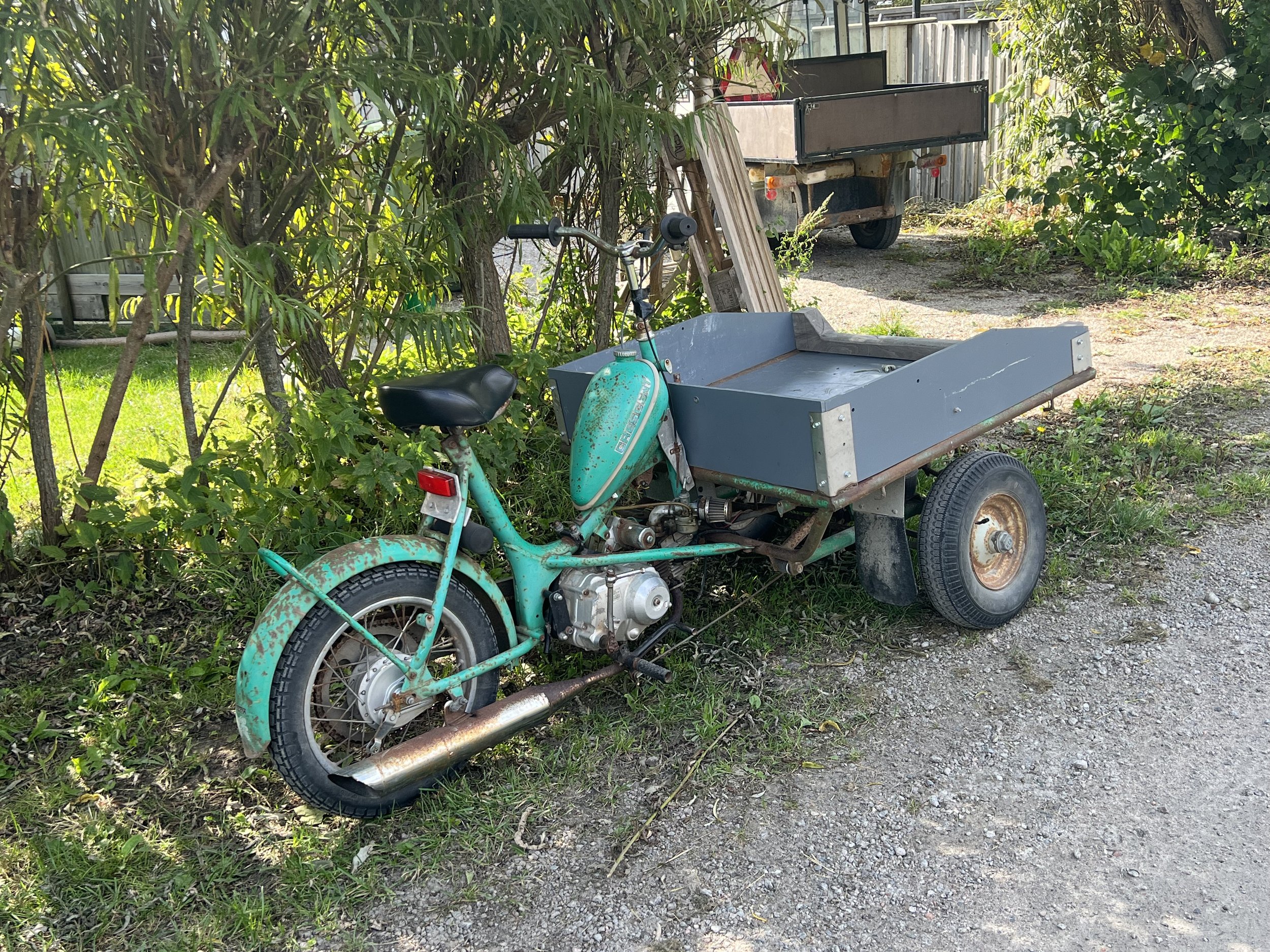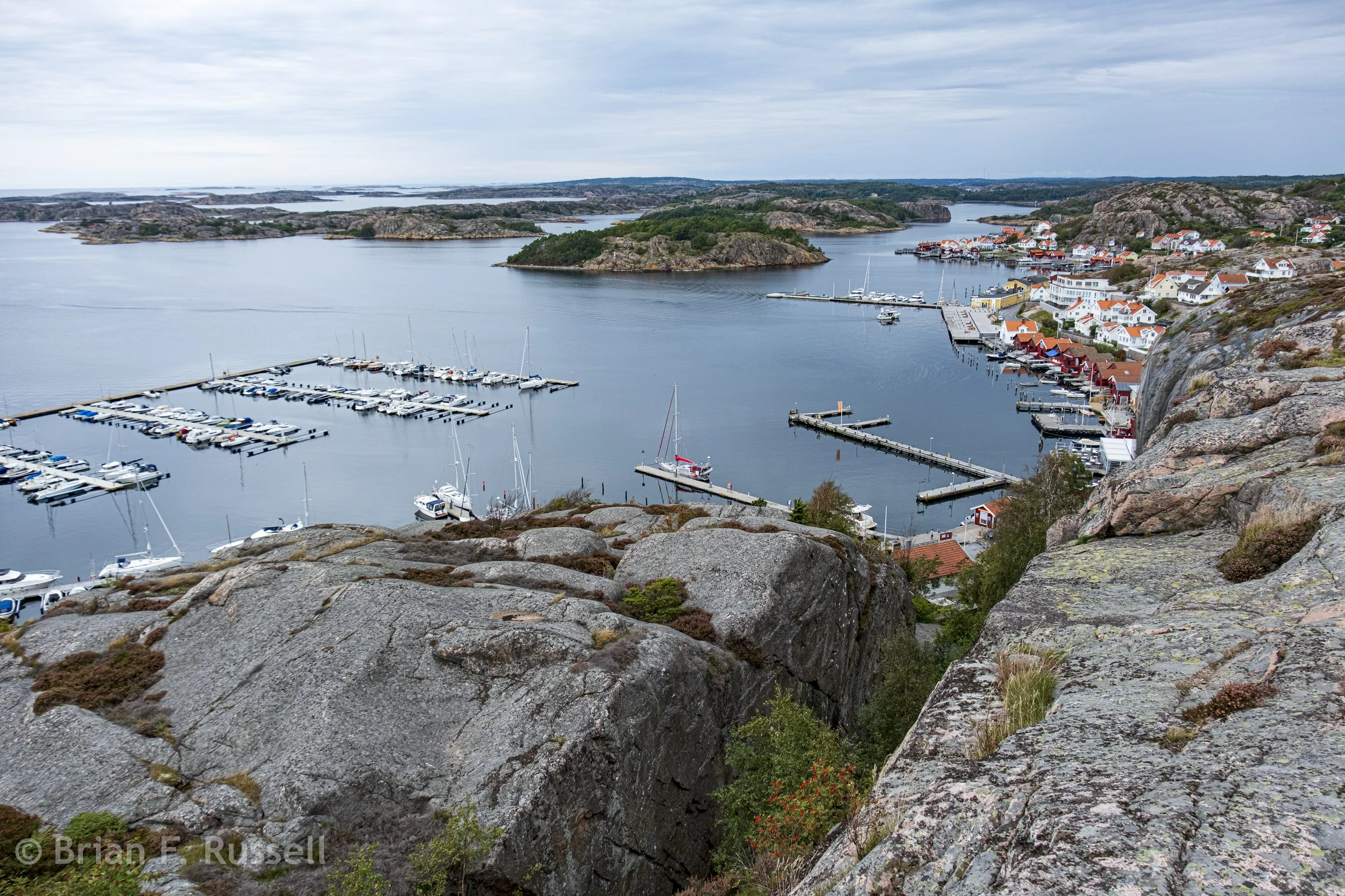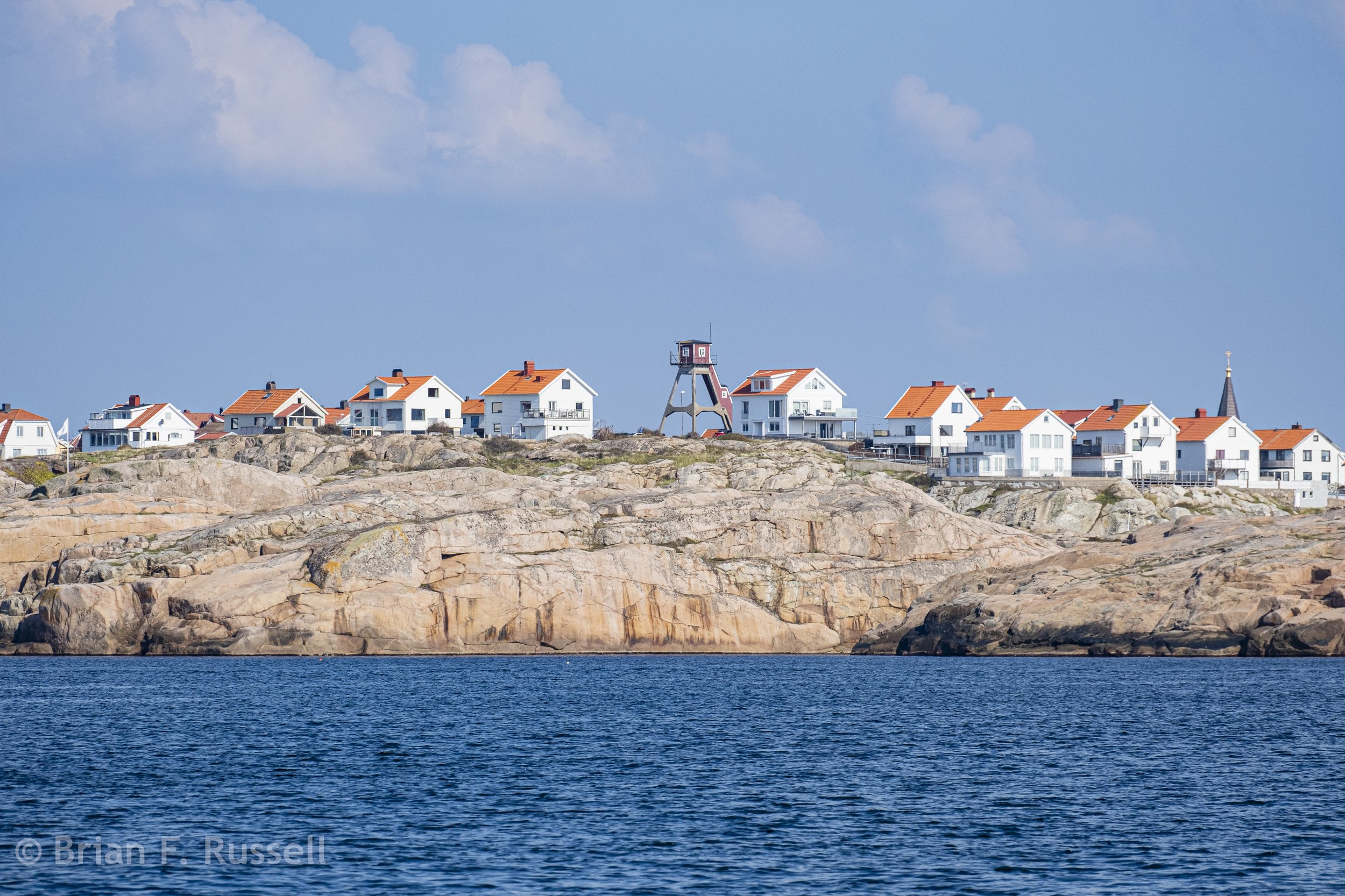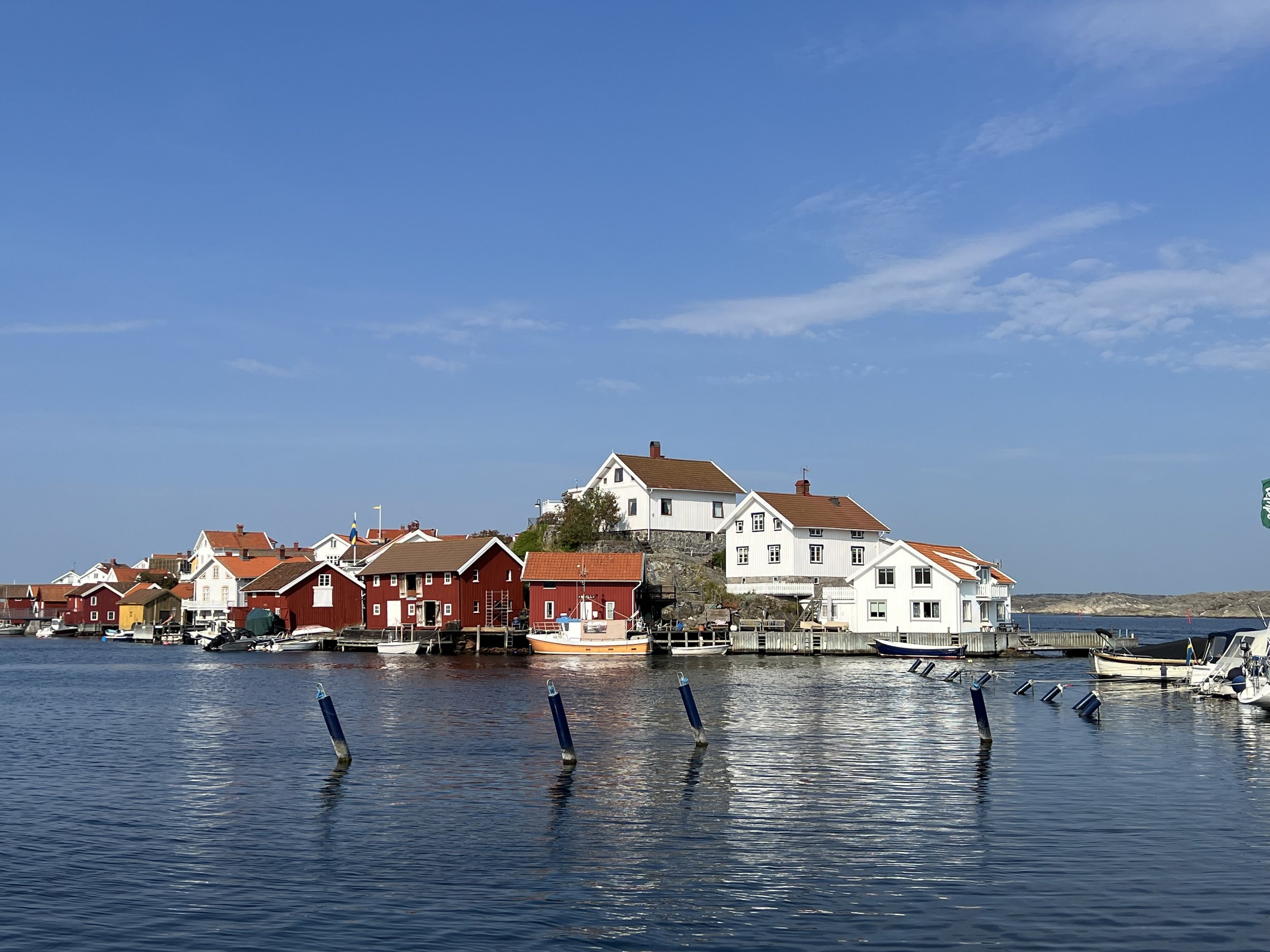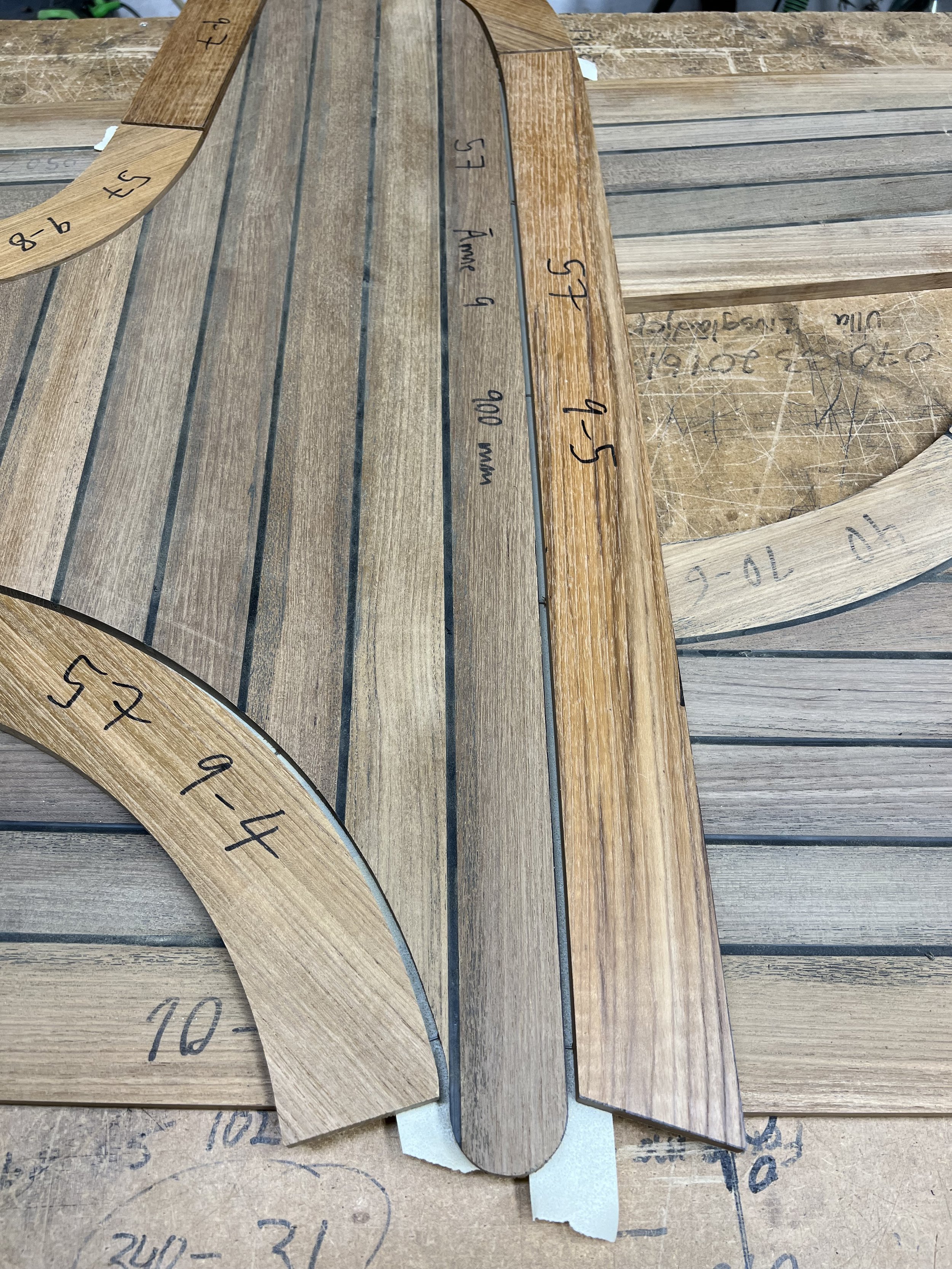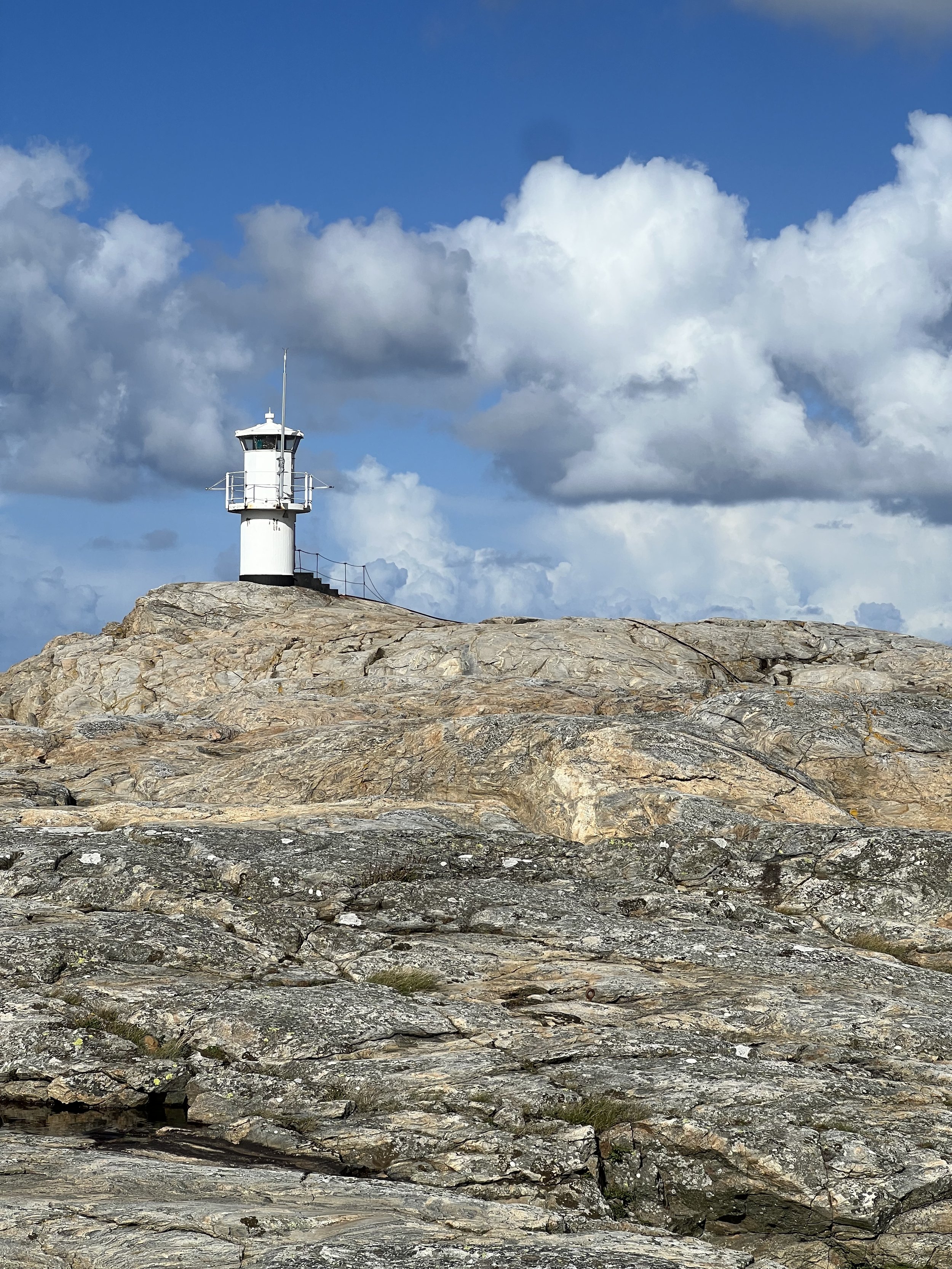Sweden Rocks
Flying the drone above Gluppö.
We enter Sweden, and the sun comes out; at least that is how it feels. Our first stop is the Koster Islands in the very north, just over the border from Norway. This small archipelago is made of two main islands, Nordkoster and Sydkoster with many beautifully maintained hiking trails and no cars. The primary mode of transport is the bicycle, and some are motorized and adapted for transporting stuff. There is a small pedestrian cable ferry that connects the two islands.
We spend a couple of days in the small marina. It is so much easier to hop on and off the boat when tied to a dock. The walks around Nordkoster are lovely, with pine and birch forest, sandy beaches and heather covered rocks to scramble across. Finding the marks indicating the trail, especially across the rocky areas, made it feel like a treasure hunt.
Secluded beaches
From the peak on Nordkoster looking southwest.
It began to feel quite autumnal. There were apple trees laden with ripe fruit and the Rowan trees and native wild plum were also looking very productive (though tasted bad, so said my tester).
We then move down to a lovely anchorage, off a long beach on Sydkoster and we spend a couple of days there, enjoying the sunny weather and more trails. It was even warm enough for a dip.
Moving on south, we have a lovely gentle sail down to Fjällbacka, passing the small island Dannholmen where Ingrid Bergman spent her summers and where her ashes were scattered.
Modest summer residence of Ingrid Bergman with a dove sculpture.
Fjällbacka waterfront.
The town of Fjällbacka was a good stop. Huge cliffs dominate what was once a small fishing village. It has grown since Ingrid Bergman’s day, and is now the headquarters of Tetra-Pak. Just behind the marina, steps led us up to a slot between towering rock faces where four giant boulders hung above. I couldn’t help but hold my breath as I walked beneath.
View from the top overlooking Fjällbacka and skerries to the west.
The following day we rented bicycles from the local campground and set off to explore more rocks. These were different – Bronze Age rock art. There is a UNESCO World Heritage site near the town of Tanumshede. A little closer and without the tourist buses and interpretation center, was Vandring Världsarv, a less developed 5km circular loop through the countryside, visiting 3 sites with plenty of examples for our delight.
Rock face covered with Bronze age images.
Some of the carvings were highlighted with red paint to help visualize them. Others were harder to see. Brushes were provided to sweep away the leaves that were falling all around.
The hike was lovely too, through mossy woods with so many different fungi. I am not yet ready to test my plant identification skills by eating any, but I do enjoy taking their photos.
Snapping some plant life.
The rock art continued. Ships with acrobats and a large fishing net between two boats. The sheer number was amazing….. and why here? We wondered what more lay beneath the other moss and lichen covered rocks all around.
During the walk we met a lovely couple, Christina and Jan, who we chatted with at various stops along the way. We told them about our travelling lifestyle and were delighted to find them waiting at Helacious when we got home. Of couse a cup of tea was in order.
Fjällbacka cliffs illuminated at night.
The weather forecast predicted a few lovely sunny days with warm temperatures and light winds. We did not want to waste such weather on motoring south, so we tucked into a nearby anchorage between the islands of Gluppö and Fläskön. Here we spent two beautiful days amongst the golden granite rocks so typical of this part of the Swedish coastline. We still preferred to anchor in the middle and not tie up to the many bolts that were provided along the rock faces. The exception was for Dingbat, the dinghy.
Anchorage at Gluppö.
Handy bolts to secure the dinghy; useful in the absence of trees or sandy beaches.
We even managed a couple of lovely sunsets. Finally it felt like summer.
The wind filled in a couple of days later and we took advantage of it and sailed south to Smögen. Here we filled the fuel tanks (our first fill up since Inverness in Scotland) and anchored just offshore.
Smögen clinging to bare rocks, not a tree in sight.
The next day we sailed inland and made our way up a narrow channel to visit Bassholmen, the site of a wooden boat museum and restoration center. The museum was officially closed, but there were still plenty of people around and we could see a number of the boats that were being worked on or had been restored.
A new project boat for the museum at Bassholmen.
We had one more day of fine weather as we visited Gullholmen, the oldest fishing village on Sweden’s west coast. It is a mass of small houses packed onto a tiny island. The path (no roads) wove between the homes and often right across their gardens or decks. It was delightful to meander our way through, catching glimpses of the water through alleyways.
Gullholmen.
The next day the weather changed and we moved Helacious over to Ellös where we had an appointment the following day for a private tour of the Halberg Rassy factory. Stefan, the Quality Control manager, gave us a fascinating glimpse into how these top quality blue-water sailboats are manufactured. The care and pride they take in the design and the building process was inspirational. We were shown the woodshop and the assembly sheds. The fiberglass work is done at another site and the bare hulls are delivered to Ellös for everything to be installed. Each boat is then taken on sea trials for up to 3 weeks to test it all (mostly electronic issues) before being handed off to the new proud owner.
Above, the woodshop with stacks of oak, mahogany and teak. The teak decks are individually crafted. If you select this option, for a 34ft boat, it will cost you an additional $60,000. The interior of the HR boats have lovely sinuous curves, created, we discovered, by lamination in complex heated molds.
The bare hull is delivered with all exterior paint, gelcoat, trim and bulkheads installed. It is then slipped into a bay in the assembly sheds where it will stay until everything has been installed. The full floor at deck level makes it so easy for the work to get done.
The bare hull, a starting point. Then in go the tanks, electronics, finish woodwork and cushions.
The weather was foul and we left Ellös to head south, choosing to motor the inland route in protected waters rather than face high seas going offshore. We pulled into Marstrand, a historic town and tied up to the town dock. In high season we have been told this place is a zoo, but now it is midweek and off season, so there is no problem finding a spot. The disadvantage of traveling out of season is many tourist spots have closed. The restaurants are all on weekend-only schedule (if that) and the castle was also shuttered. A real shame as I wold have loved to look around and learn some Swedish history.
Marstrand town center is dominated by the castle. As it was closed we explored the streets of the old town.
We walked around the castle, the incredibly thick walls maybe explaining how it has withstood attacks from those pesky Danes and Norwegians over the years.
Then around the rest of the island. There were bathing spots for guys and gals, lovely sheltered pools and of course lots of rock.
Our time in Sweden was coming to an end. We had one last stop to make before we turned west.
Rörö is a small and popular fishing village about an hour’s sail from Götenburg. We arrived early on a Friday afternoon and took the coveted alongside-spot on the main dock. There was then a steady stream of boats arriving and tying up, squeezing themselves in to the tiny and shallow harbor. The forecast of a sunny weekend this late in the season probably explains the crowd. We were joined at the end of the day by friends Jennie and Olof, who we had met back in Norway on the island of Kvitsøy.
Cementing our friendship with a dram or two.
We took a picnic and walked around the island, most of which is a nature reserve, complete with a herd of “wild” horses. The driftwood shack was a fun find, made over the years as building supplies got swept onto the beaches.
And just like that, after a couple of delicious dinners onboard our two boats, it was time to say goodbye, not only to Jennie and Olof, but to Sweden. We parted ways and tucked into a sheltered anchorage. Time to prepare the boat for the crossing on to new lands.
We will miss the beautiful rocks of Sweden.
Follow our progress on our tracking page https://forecast.predictwind.com/tracking/display/SVHelacious/



